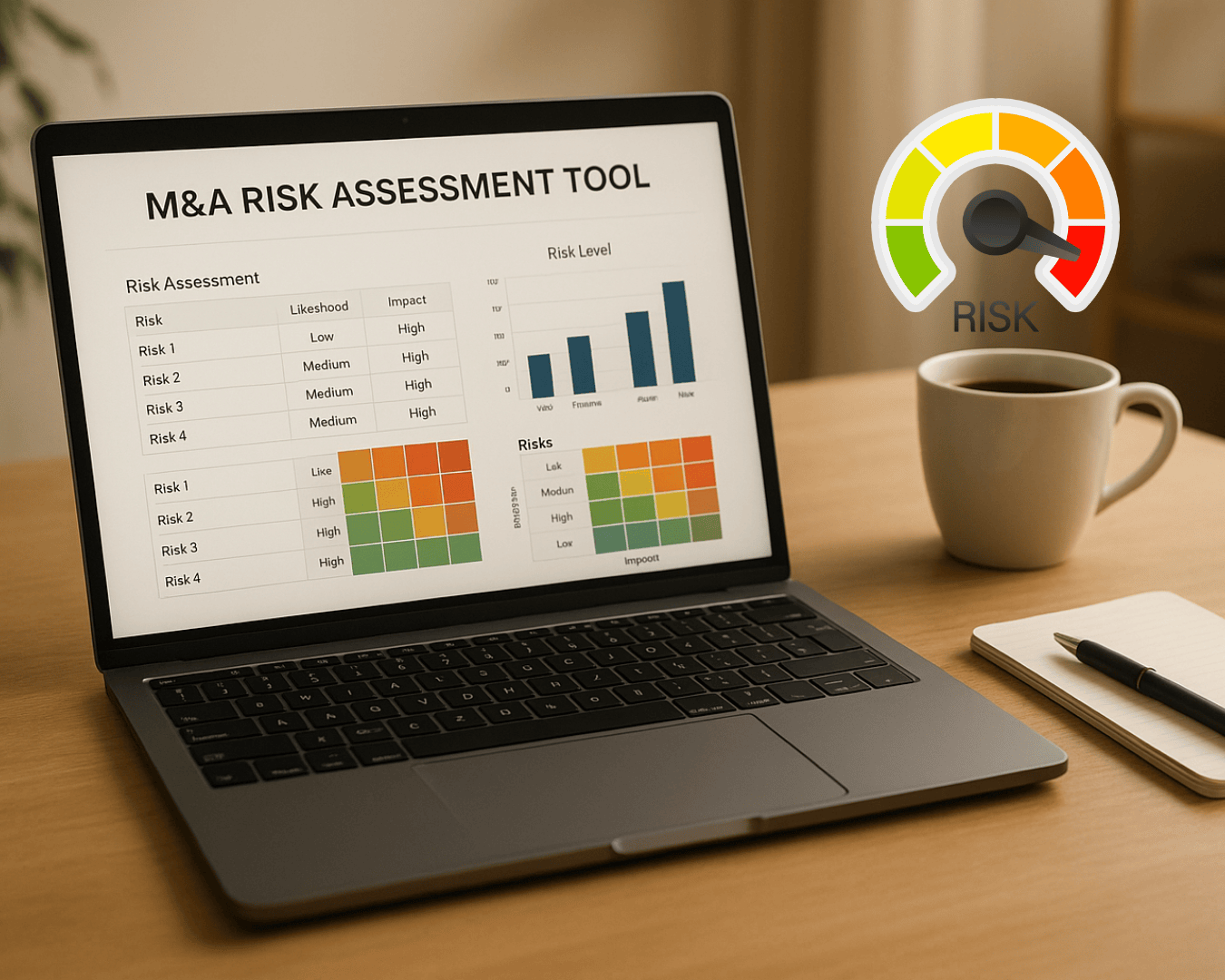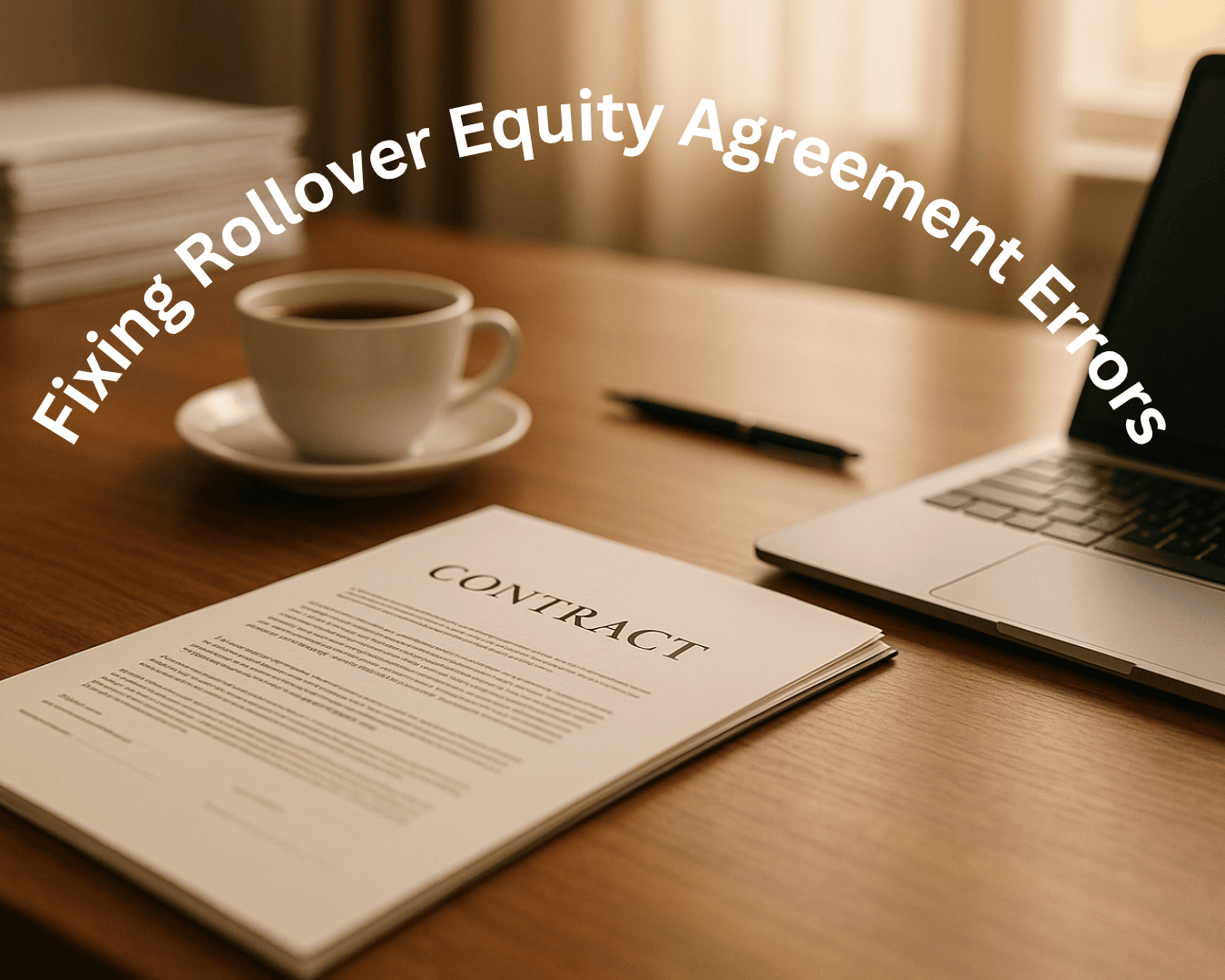Merging companies often fail because they ignore a critical factor: how their employees work, communicate, and make decisions. Culture conflicts can lead to low morale, lost productivity, and even the departure of key talent, with 30% of mergers failing due to misalignment. But the good news? Addressing these issues early can turn potential friction into collaboration.
Here’s what you need to know:
- Start by identifying differences in leadership, communication, and decision-making styles before the deal is finalized.
- Use tools like surveys, interviews, and audits to assess how each company operates.
- Choose an integration approach, whether blending practices or maintaining separate systems, based on the size and needs of both companies.
- Keep employees informed, involve them in the process, and align leadership on a shared vision.
- Track progress through metrics like engagement scores, retention rates, and productivity to adjust strategies as needed.
What Are Culture Conflicts in Business Acquisitions
Defining Culture Conflicts
Culture conflicts occur when companies with different values, work habits, and communication styles merge. Each organization develops its own unique way of operating over time, and when these approaches clash, friction is inevitable.
These conflicts can show up in various ways. For instance, one company might embrace a democratic leadership style, encouraging input from employees, while the other follows a top-down, autocratic approach. Communication can also be a sticking point - some businesses thrive on open, informal discussions, while others prefer structured, formal exchanges.
It’s not just about leadership or communication. Companies often differ in their approach to innovation, risk-taking, feedback, and teamwork. Imagine a risk-taking, fast-moving company merging with one that prioritizes careful, methodical processes. Without careful planning, these differences can lead to significant challenges.
Why Culture Conflicts Create Problems
When cultural differences go unaddressed, they can lead to serious issues. Employee morale often takes a hit, and disengagement becomes common. Teams struggle to align their work habits and communication styles, slowing productivity. Misaligned decision-making processes can delay progress and create inefficiencies, making it harder to establish a unified organizational identity.
Another major risk is losing key talent. Employees who feel out of place in the new culture may leave, taking valuable knowledge and skills with them. This kind of turnover doesn’t just disrupt operations - it sends a poor message to remaining staff and customers. On top of that, the financial toll of replacing employees and missing business goals can eat away at the value the acquisition was meant to bring.
How Company Culture Affects Deal Success
Despite these challenges, cultural differences don’t have to spell disaster. In fact, when managed well, they can become a strength. According to research from McKinsey, mergers and acquisitions that prioritize culture management tend to perform better than those that overlook it. The goal isn’t to find two companies with identical cultures but to understand and manage their differences effectively.
When cultural alignment is achieved, integration becomes smoother, employees stay engaged, and business results improve. In some cases, blending complementary cultural traits can lead to unexpected synergies. For example, employees might feel more optimistic about the future, customers could benefit from consistent service, and operational improvements may happen faster than anticipated.
The key is to avoid framing one culture as superior to the other. Instead, focus on leveraging the strengths of both. A democratic company might bring structure and efficiency, while a collaborative one offers innovation and flexibility. Success lies in merging these strengths rather than forcing one culture to dominate.
Leading companies have started addressing cultural fit early in the acquisition process. During due diligence, they assess cultural compatibility alongside financial and strategic factors. This proactive approach helps them craft strategies to manage potential conflicts before they escalate.
Here’s a quick look at how cultural differences can lead to specific challenges:
| Aspect | Company A (Acquirer) | Company B (Target) | Potential Conflict Area |
|---|---|---|---|
| Leadership Style | Democratic | Autocratic | Decision-making, empowerment |
| Communication Style | Informal | Formal | Information sharing, feedback |
| Team Dynamics | Collaborative | Competitive | Project management, morale |
| Attitude to Innovation | Risk-taking | Process-driven | Change management, creativity |
Merging Cultures: 3 Critical Steps to Avoid Mayhem
How to Spot Culture Differences Before Integration
Understanding cultural differences early on can significantly improve the chances of a successful integration. According to research, 95% of executives consider cultural fit a key factor in integration success. Waiting until after the deal is finalized to address these differences often allows problems to grow unchecked.
Starting cultural assessments several months before the deal closes gives you the time needed to identify potential conflicts and create strategies to address them. The aim isn’t to find a perfect cultural match but to pinpoint areas that might cause friction and plan ahead. These insights can then guide more focused evaluations.
Running Company Culture Assessments
Employee surveys are a great way to understand work habits, communication styles, leadership expectations, and overall job satisfaction. Anonymous surveys tend to produce more candid feedback. Asking specific, experience-based questions - like, “How are decisions typically made in your department?” - can uncover how things actually work, not just how they’re supposed to. Make sure to survey both management and front-line employees, as their viewpoints often differ.
One-on-one interviews with key team members can fill in gaps that surveys might miss. Speaking directly with department heads or other influential employees provides deeper insights into what matters most to the workforce and what challenges they face.
Focus groups offer another layer of detail, especially when organized by department or role. These sessions can bring to light unspoken norms and informal processes that shape daily operations.
Culture audits involve observing real workplace behavior. Attending meetings and watching how employees interact can reveal discrepancies between stated practices and what actually happens on the ground.
Once you’ve gathered this information, the next step is to compare the core cultural elements of the companies involved.
Key Areas to Compare Between Companies
- Management practices: Look at how authority flows and decisions are made. Does one company expect managers to act independently, while the other leans on extensive consultation? Examine performance reviews, promotion criteria, and whether employees can bypass their immediate supervisors when necessary.
- Working norms: Compare practical aspects like dress codes, office hours, meeting styles, and project workflows. For instance, one company might prefer informal, spontaneous discussions, while the other relies on structured meetings with detailed agendas.
- Mind-sets: Assess attitudes toward risk, change, and innovation. Some organizations embrace experimentation and view failure as part of learning, while others prioritize consistency and proven methods.
- Communication practices: Evaluate how information is shared. Does communication flow freely, or is it tightly controlled by hierarchy? Is email the primary tool, or do employees rely more on instant messaging or face-to-face discussions?
- Conflict resolution approaches: Understand how disagreements are handled. One company might address issues openly and directly, while the other may rely on indirect approaches or managerial intervention.
Creating Comparison Tables for Clear Analysis
A comparison table can help you organize and prioritize cultural differences. This format highlights areas that could cause friction and helps focus integration efforts. Start by listing the key areas likely to impact daily operations and expand to broader organizational traits. Here’s an example:
| Cultural Element | Company A | Company B | Integration Priority |
|---|---|---|---|
| Decision Making | Consensus-based, slow | Top-down, fast | High |
| Work Schedule | Flexible hours, remote | Fixed hours, office | Medium |
| Performance Reviews | Quarterly, peer input | Annual, manager-only | High |
| Meeting Culture | Informal, frequent | Formal, scheduled | Low |
| Innovation Approach | Experiment freely | Proven methods only | High |
Including an integration priority column ensures focus on the most impactful differences - those affecting operations, employee satisfaction, or customer experience - while less critical issues can be addressed later.
Quantifying the financial impact of cultural mismatches can also strengthen the case for investing in integration. Studies show that merging companies with opposing cultures (e.g., tight vs. loose) can lead to a $200 million drop in net income on average within three years. In extreme cases, the annual net income loss can exceed $600 million.
It’s worth noting that 25% of executives cite cultural misalignment as the main reason for failed integration efforts. Conducting a thorough and collaborative cultural assessment before the merger not only identifies potential challenges but also sets the stage for stronger organizational relationships. Early detection of differences is key to crafting strategies that protect the value of your acquisition.
Methods to Address and Manage Culture Conflicts
After identifying cultural differences and outlining practical steps for integration, the next task is deciding how to bring these cultures together. The strategy you choose will directly influence employee morale and the long-term success of the business. Research indicates that 70% of major transformation efforts fail due to a lack of engagement and a poorly communicated vision.
Picking an Integration Approach
The right integration strategy depends on factors like company size, industry, and the extent of cultural differences. Here’s a breakdown of the main approaches, along with their benefits and challenges:
| Integration Approach | Description | Pros | Cons |
|---|---|---|---|
| Absorption | One company fully adopts the other’s culture | Quick implementation, clear direction, avoids confusion | Risk of high turnover, loss of valuable practices, potential resentment |
| Fusion | Create a new culture blending elements of both | Balanced approach, fosters innovation, offers a fresh start | Time-intensive, complex to execute, uncertain results |
| Compromise | Retain some practices from both companies | Preserves strengths, moderate change, easier buy-in | May create inconsistencies, might not address core conflicts |
| Coexistence | Both cultures remain separate within the merged entity | Minimal disruption, retains all practices, low resistance | Long-term inefficiencies, ongoing conflicts, divided loyalties |
If speed and clarity are priorities, absorption may be the best option, especially when one company’s practices are clearly superior. However, this approach risks alienating employees and losing key talent.
For companies of similar size and influence, fusion can deliver strong results by combining the best elements of both cultures. While it takes more effort, it often leads to a more unified and innovative organization.
Compromise offers a middle path, preserving key strengths from both sides. However, this approach requires careful execution to avoid creating a fragmented culture.
Finally, coexistence might seem like the easiest route, but it often leads to operational inefficiencies and long-term challenges as differing practices persist.
Once you’ve chosen an integration strategy, it’s time to focus on the practical steps for a smooth transition.
Best Practices for Successful Integration
Effective cultural integration requires thoughtful actions across multiple fronts. Here are some key principles to guide the process:
- Align leadership from the start. Leaders must agree on the integration approach and timeline. Mixed messages can create resistance, so regular leadership meetings during the early stages are essential.
- Communicate frequently and clearly. Keep employees informed about changes to maintain momentum and address concerns promptly.
- Involve employees in the process. Create integration teams with representatives from both companies to tackle areas like communication protocols, meeting structures, and performance reviews. This fosters a sense of ownership and uncovers practical solutions.
- Tackle practical details early. Address logistical issues - such as email systems, meeting formats, or dress codes - early to minimize friction.
- Preserve what works. Don’t change effective processes just for the sake of uniformity. If one company excels in areas like customer service or project management, consider adopting those practices across the organization.
- Set clear expectations and timelines. Establish deadlines for new processes and define success criteria to reduce uncertainty and ensure consistent implementation.
Creating a Shared Vision
Operational best practices are just one part of the equation. To achieve lasting success, teams need to rally around a shared vision that unites and motivates them.
Involve leadership and employees in crafting this vision. A collaborative approach encourages buy-in and brings diverse perspectives to the table. Use brainstorming sessions, workshops, and strategic dialogues to gather input.
Define the purpose of the merger: What unique value does the combined company offer? This purpose should connect with the existing values of both organizations while highlighting new opportunities. Incorporate these values into measurable goals with clear timelines.
Conduct a thorough assessment of both companies’ current states. Use tools like a SWOT analysis to identify strengths, weaknesses, opportunities, and threats.
Draft a compelling vision statement that captures the essence of your goals. The statement should be ambitious enough to inspire action but realistic enough to guide employees effectively.
"The true essence of a shared vision in collaborative leadership lies not in its mere existence but in its power to inspire, unite, and propel teams towards unprecedented heights of success." - Voltage Control
Break the vision into actionable steps. Set SMART goals (Specific, Measurable, Achievable, Relevant, Time-bound) that link daily tasks to the larger vision. Use key performance indicators to track progress and provide regular updates on integration milestones.
Keep the vision front and center. Reference it in meetings, internal communications, and decision-making. Leaders should embody the vision in both their words and actions.
Establish feedback loops like surveys, suggestion boxes, or open forums to refine the vision and integration strategies. Continuous feedback helps address issues early and ensures the vision stays relevant as circumstances evolve.
When employees see clear benefits and feel included in the process, resistance often transforms into active participation.
sbb-itb-a3ef7c1
Tracking and Adjusting After Integration
The work doesn’t stop once a strategy is in place. Successful integration relies on ongoing monitoring and adjustments. Without this continuous effort, unresolved cultural conflicts can reemerge, potentially jeopardizing long-term success.
Measuring Integration Success
To understand how well cultural integration is progressing, it's essential to rely on both quantitative metrics and qualitative feedback. These tools provide insight into how employees are adapting and how the business is performing within the new cultural framework.
- Employee engagement scores: These scores shed light on how connected employees feel to the organization and whether they’re embracing the merged culture. Regular surveys can track shifts over time and pinpoint areas that need attention.
- Retention and turnover rates: These figures indicate how employees are responding to cultural changes. High turnover may point to unresolved tensions, while stable retention suggests a smoother adjustment.
- Productivity levels: Misaligned cultures often lead to inefficiencies, delays, and reduced output. Tracking productivity and industry-specific KPIs can reveal whether cultural integration is supporting business goals.
- Participation in cross-company initiatives: High engagement in joint projects signals successful collaboration, while low participation may highlight lingering divides between the merged entities.
According to McKinsey research, companies that prioritize culture management significantly outperform those that don’t. This underscores the importance of systematic measurement in achieving long-term success.
Making Changes Based on Feedback
Once you’ve gathered data on integration progress, it’s time to act. Use this feedback to make both immediate and strategic adjustments. Regular review cycles with cross-functional teams can help interpret the results and identify actionable steps.
- Create safe spaces for feedback: Anonymous surveys, focus groups, and one-on-one interviews encourage employees to share honest insights about their experiences during integration.
- Address recurring issues: Look for patterns in feedback. For example, if multiple employees highlight concerns about communication or decision-making, these issues likely require broad, systemic solutions rather than isolated fixes.
- Focus on quick wins: Small, immediate changes - like clarifying confusing procedures - can build trust and demonstrate responsiveness. Larger challenges, such as conflicting management styles, may take longer to address but should still be acknowledged with a clear plan and timeline.
- Close the feedback loop: Let employees know how their input is being used. When people see their feedback leading to tangible improvements, they’re more likely to stay engaged in the process.
Organizations that consistently use surveys and scorecards to guide interventions have seen improvements in retention and morale. This proactive approach helps address potential problems before they escalate.
Running Post-Merger Reviews
Beyond immediate adjustments, regular reviews are key to ensuring sustained cultural alignment. These structured reviews should take place at intervals such as 3, 6, and 12 months after integration, and then annually. They provide a chance to step back and evaluate the overall success of the cultural integration.
Each review should include:
- Assessment of metrics: Revisit employee engagement, retention, productivity, and other key indicators to measure progress.
- Trend analysis: Examine patterns in employee feedback to identify ongoing challenges or improvements.
- Business performance evaluation: Compare outcomes to pre-merger projections to determine whether integration efforts are meeting expectations.
- Lessons learned: Document successes and failures to refine future strategies.
Including representatives from both original organizations ensures a variety of perspectives are considered, which can uncover insights that might otherwise be overlooked. Reviews should also explore any unintended consequences of integration decisions. For example, changes that work well in one area might inadvertently create challenges elsewhere.
To build on these insights, establish knowledge-sharing processes that capture lessons from each acquisition. This approach helps organizations refine their integration playbooks, making future mergers smoother and more effective.
Finally, post-merger reviews aren’t just about solving problems - they’re also an opportunity to celebrate wins. Recognizing teams and individuals who contributed to successful integration reinforces positive cultural shifts and encourages ongoing collaboration.
Using Technology and Tools for Smooth Integration
Technology has reshaped how companies manage acquisitions, replacing outdated spreadsheets with advanced platforms. These tools make it easier to identify issues, monitor progress, and simplify transitions, ensuring smoother operations post-deal.
Clearly Acquired's Advisory and AI-Driven Solutions

Clearly Acquired offers a comprehensive suite of services, combining capital, advisory expertise, verified deal flow, and proprietary tools to support every phase of the transaction lifecycle - from sourcing to closing and beyond. Their AI-powered platform provides early insights, helping businesses address cultural differences before they escalate into costly problems.
With advanced search capabilities and user verification, the platform delivers detailed cultural profiles. These insights allow acquirers to assess management and operational alignment even before the deal is finalized, reducing the risk of cultural misalignment - a critical factor for successful integration.
Their buy-side advisory services bring strategic expertise to the table, assisting in evaluating both financial and cultural compatibility to ensure long-term goals are aligned. Additionally, their educational resources, including a business acquisition course, offer buyers practical frameworks for assessing cultural fit, identifying integration risks, and building effective communication strategies.
Simplifying the Integration Process
Post-deal, Clearly Acquired provides management hubs and dashboards to centralize tracking of cultural and financial performance. These tools help ensure milestones are met and progress stays on track.
Secure data rooms powered by AI simplify the sharing of information between merging organizations. Teams can collaborate in organized, secure spaces, reducing the need for multiple communication channels while maintaining transparency and protecting sensitive data.
The platform also features in-app messaging, enabling direct communication between integration teams from both companies. This reduces confusion and streamlines coordination, even across different systems. Additionally, automated NDA deployment accelerates the sharing of sensitive plans and assessment data with key stakeholders, keeping the process efficient and secure.
Training Teams for Effective Integration
While technology plays a key role, training is equally important for managing cultural integration effectively. Often, cultural challenges require skills beyond traditional leadership experience. To address this, Clearly Acquired offers a business acquisition course designed to provide practical training in handling cultural differences.
The course uses real-world scenarios to equip buyers with actionable strategies for overcoming common integration challenges. Beyond the training, the platform fosters a buyer community, connecting acquirers with peers who have successfully navigated similar issues. These connections offer valuable, experience-based insights that go beyond theoretical approaches.
Finally, the platform’s verified deal flow provides historical data on past transactions, helping teams anticipate potential hurdles and craft proactive strategies for smoother cultural integration. By combining cutting-edge technology with practical training and community support, Clearly Acquired equips businesses with the tools they need to manage cultural conflicts effectively during the acquisition process.
Conclusion: Key Points for Managing Culture Conflicts
Managing culture conflicts effectively starts well before the deal is finalized. The ability to integrate cultures seamlessly often determines the overall success of an acquisition.
By conducting early assessments during due diligence, companies can uncover potential friction points and identify gaps in areas like decision-making, communication, and daily operations. These insights pave the way for a more targeted and effective integration strategy.
Strategic planning plays a pivotal role in this process. Choosing the right integration approach and fostering a shared vision help align teams and reduce resistance, setting the stage for smoother collaboration.
Ongoing monitoring is equally important. Tools like engagement surveys and retention metrics provide valuable feedback, enabling organizations to make timely adjustments. Leveraging technology to support these efforts can make a significant difference. For example, AI-powered platforms like Clearly Acquired help identify cultural risks early, manage integration workflows, and centralize performance tracking.
The most successful acquirers blend data-driven insights with hands-on integration strategies. By preparing early, planning strategically, measuring progress continuously, and using the right tools, they transform cultural challenges into opportunities for growth and success.
FAQs
What is the best way to evaluate cultural differences before a merger or acquisition?
To properly assess differences in workplace culture before a merger or acquisition, the first step is to carry out detailed cultural evaluations. This might involve tools like employee surveys, focus groups, or interviews with important stakeholders from both companies. These approaches can highlight differences in values, leadership approaches, and ways of communicating.
Bringing in experts who specialize in workplace culture can offer even more valuable insights into potential challenges or areas where the two organizations align. Spotting these differences early allows companies to tackle potential conflicts head-on, paving the way for smoother integration and fewer hiccups after the merger.
What is the best way to integrate company cultures after a business acquisition?
To bring together company cultures after a business acquisition, it's essential to start with a deep dive into both cultures. This means thoroughly assessing the values, practices, and differences that define each organization. With this insight, you can craft a clear integration plan that not only supports the acquisition's goals but also respects and incorporates the strengths of both cultures.
Leadership is the driving force behind successful cultural integration. By demonstrating the desired behaviors and maintaining open, honest communication, leaders can build trust and show their dedication to creating a unified culture. It's also important to merge the best practices from both companies, shaping an environment where collaboration and productivity thrive. Addressing cultural differences early in the process helps prevent conflicts and lays the groundwork for lasting success.
How can businesses evaluate cultural integration success after a merger and make improvements if needed?
Businesses can track how well cultural integration is working by keeping an eye on employee engagement, retention rates, and team collaboration. Regularly using tools like surveys, focus groups, and feedback sessions gives employees a chance to share their thoughts, helping leaders understand how well the new culture is taking hold and where improvements are needed.
For any necessary adjustments, leadership should focus on addressing concerns directly, maintaining clear communication, and offering ongoing support. This approach encourages a stronger, more unified workplace. By consistently monitoring progress and staying proactive, organizations can work toward achieving a cohesive culture and setting the stage for long-term success.


















.png)







































.png)








































%20Loan%20Application%20Checklist.png)










